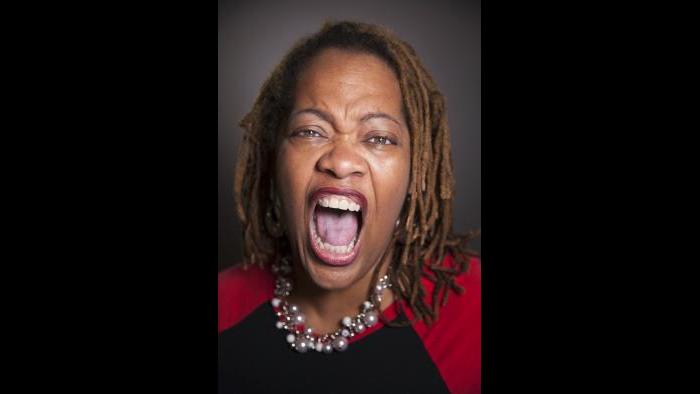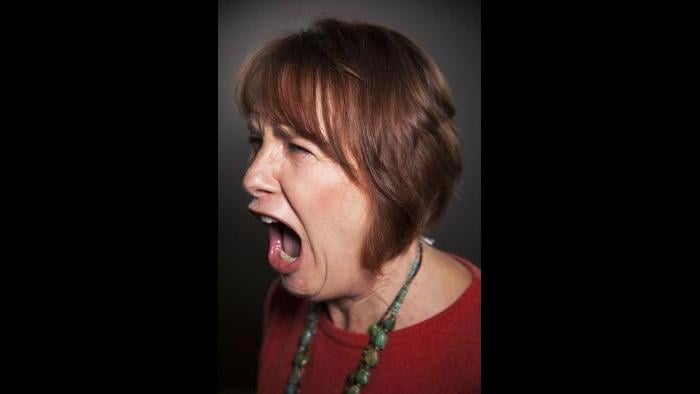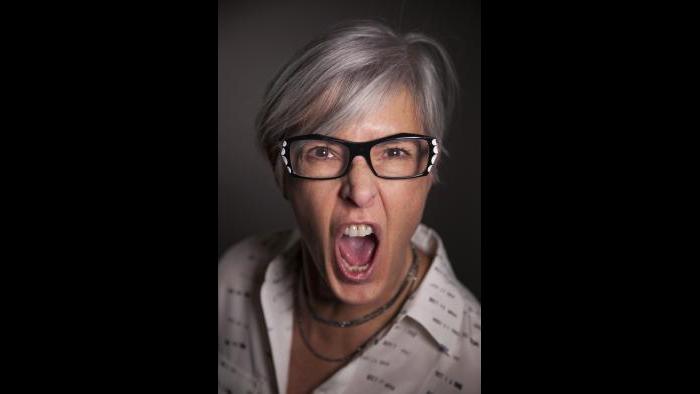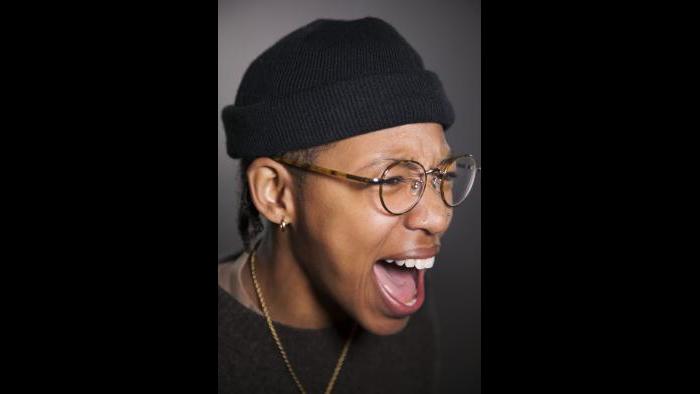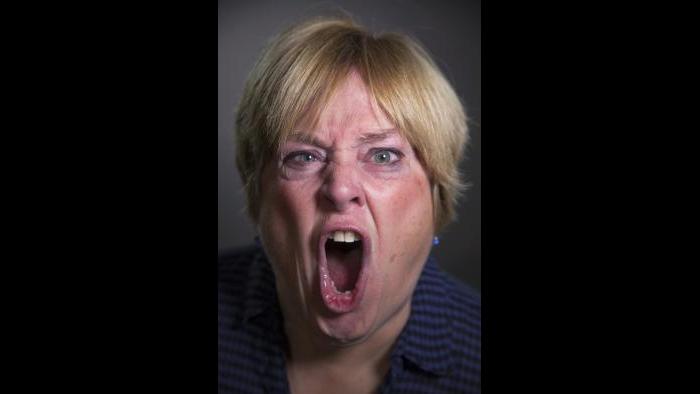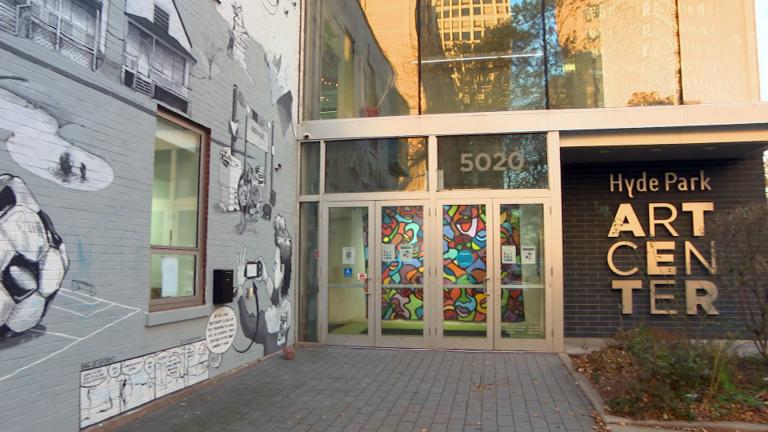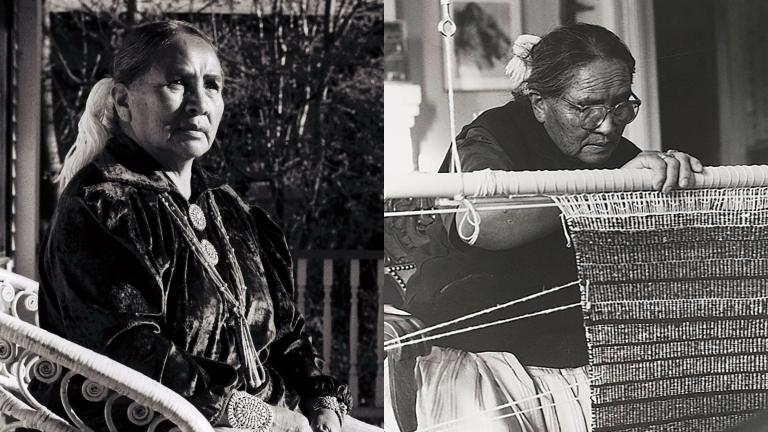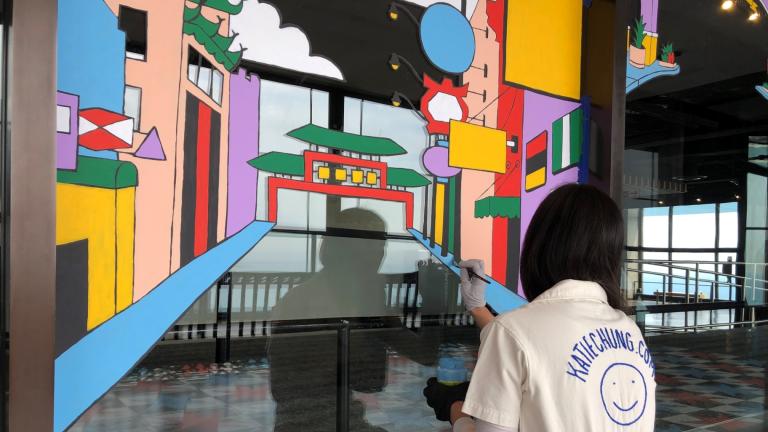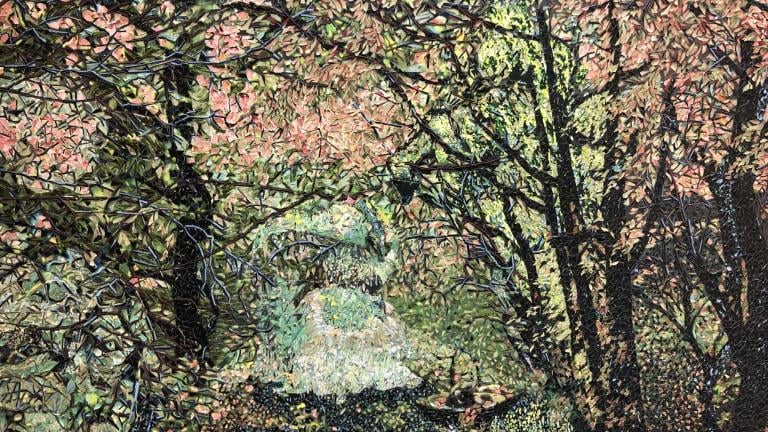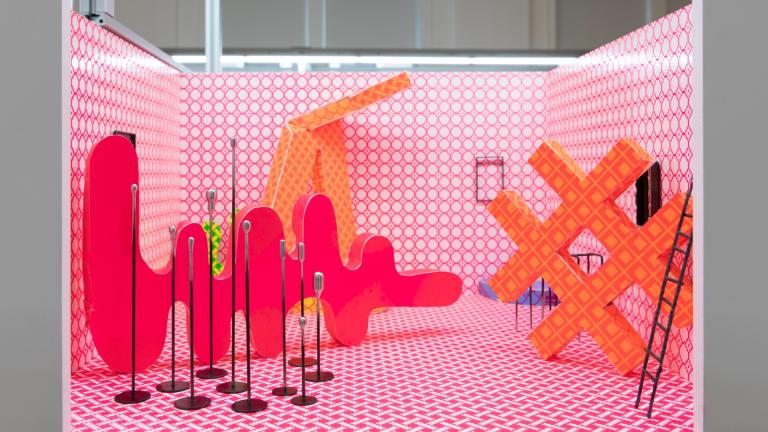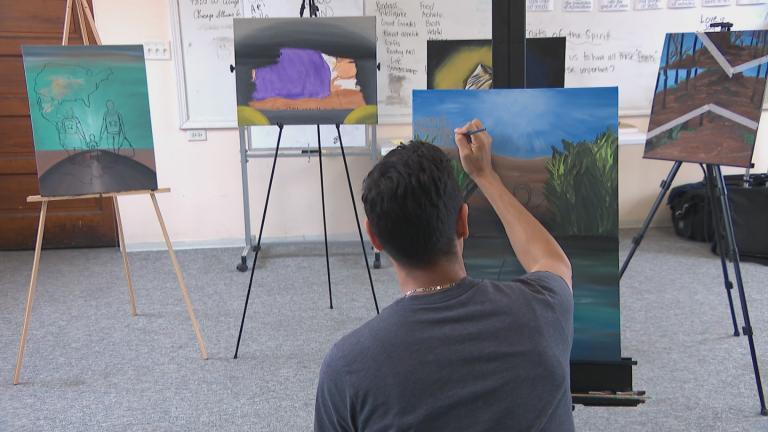An update to this story:
Since January 2018, Whitney Bradshaw has photographed more than 375 women who participated in her “Scream Sessions.” All portraits are now on display together for the first time in a new exhibit at the McCormick Gallery called “Outcry.”
The photos will be up through September 4. And those interested in signing up for a “Scream Session,” can contact Whitney Bradshaw here.
Read our original story published Nov. 27, 2018 below.
Neighbors can hear faints screams outside one Logan Square home on a weekly basis. They’re the result of “scream sessions” held in the living room of Whitney Bradshaw, a Chicago-based photographer.
“The very first scream session that I did, I did invite three of my neighbors,” Bradshaw said with a smile. “I did that so that they would get a sense of what’s happening here.”
It’s all a part of Bradshaw’s photography project called “Outcry,” now on display at the DePaul Art Museum. The exhibit features more than 100 portraits of women – screaming.
“One of the biggest reasons why I want women to scream is so that they can practice being brave and speaking up and out for themselves,” Bradshaw said. “That after you practice it a few times, that maybe it becomes more natural in the real world.”
She came up with the idea for the project nearly three years ago, but it officially began on the night of the Women’s March in January 2018. She, along with neighbors and others she met through her partner’s hairstylist, gathered in her home and screamed.
“I felt like it was just the moment where things were actually starting to change, and I really wanted this project to be part of keeping that change going,” she said. “I feel very empowered about it myself that finally women are being heard, and young girls are being heard.”
Now, nearly a year since the project first began, Bradshaw has photographed about 200 women. And each session has a structure Bradshaw follows closely.
Women who’ve never met each other arrive at her home. After introducing themselves, Bradshaw explains the process: they practice screaming three times and then everybody gets three chances, at least, to be photographed on their own.
“The woman standing in front of the camera always get to choose whether they want to scream alone or if they want to scream in unison with the group as their support,” Bradshaw said.
At a session on Nov. 12, five woman came ready to test their vocals, and most tried screaming in front of the camera on their own.
“To scream was a release,” said Humboldt Park resident Dejuanne Evans. “A lot of times, as I’m a mom and also a teacher with CPS, and there’s a lot put on us. A lot of pressure.”
For University of Illinois at Chicago student Mecca Ramsey, screaming helped open her up to her feelings.
“I was just like feeling like a myriad of emotions that I didn’t even know the scream would bring out of me,” Ramsey said. “I thought it would be like a numb scream, but it wasn’t at all.”
Beyond emotions, screaming can be a form of self-defense, Bradshaw said.
“Screaming and telling somebody what’s happening can save you in the moment,” she said. “I’ve had a number of experiences myself where screaming has saved my life – it saved me from being raped or killed. And not just screaming, but telling people what I need and what’s needs to be done to be safe.”
And for Edgewater resident Jennifer Anglin, who also participated in the Nov. 12 session, screaming was also about redefining femininity.
“So much of my life has been dictated by this need to look a certain way and be pleasing in a certain way. And I have always been very fierce, and often been made wrong for that,” she said. “It doesn’t mean I’m angry all the time or anything, but there is a kind of power that bubbles in me that I have been well trained in our culture to not express.”
That fact alone – of making art for women and by women – attracted Julie Rodrigues Widholm, director and chief curator at DePaul Art Museum, to Bradshaw’s work.
“Through the history of art, women have been represented primarily in service of the male gaze, so what happens when you sort of change that and women are depicted for other women?” she said.
The exhibit “Outcry” is on display through Dec. 16, but Bradshaw said she’s not done yet.
She said women from all over the world are now reaching out to learn more. Because of that, she’d like to make a “recipe” for how to recreate “scream sessions.”
But for now, anyone who identifies as female can participate in a “scream session” by visiting her website.

